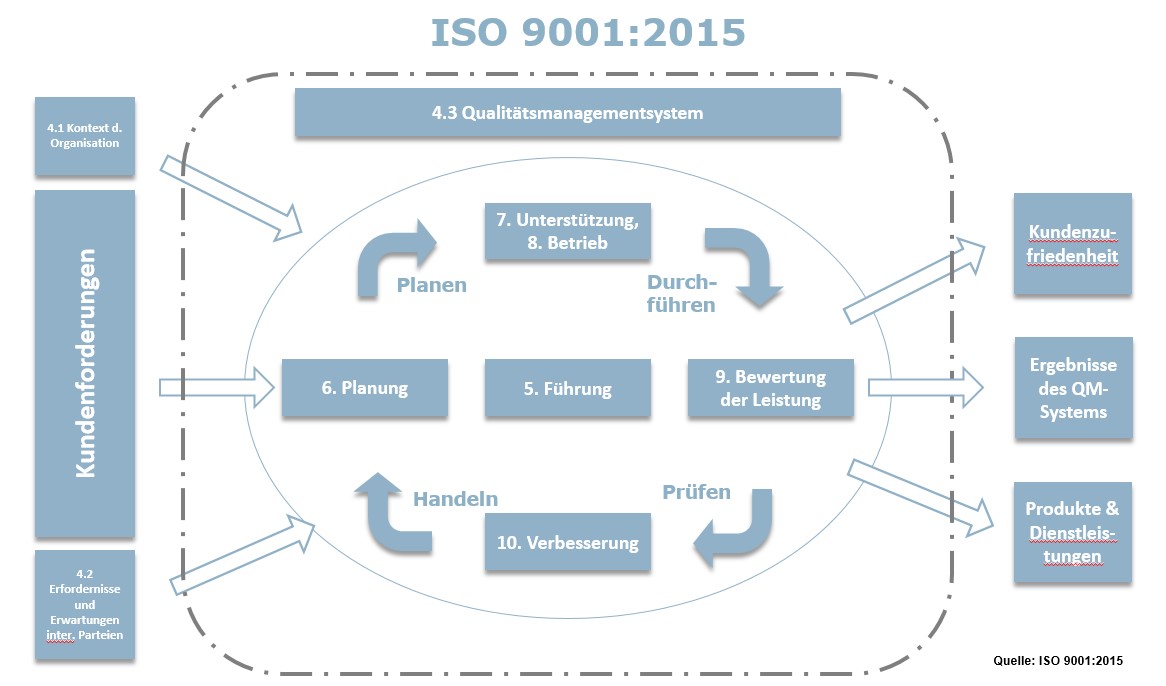The standard ISO 9001:2015 was published in September 2015 and is fully valid. The version ISO 9001:2008 was valid until September 2018.
The main requirements of the standard ISO 9001:2015 can be concluded within the following points:Management of context:
Building and adjustment of the management system regarding the context of the organization. By considering all interested parties and their legitimate requirements for the organisation and its products and services, the scope and the limitations of it can be defined.
Management of risk:
Consideration of relevant risks and chances within the scope of the management system, which effects the skills of the organization to provide the agreed products and services.
Management of knowledge:
Systematic approaches and structured specifications for the identification, maintenance and further development of organisational knowledge.
Management of change:
Identification, evaluation and systematic processing of relevant changes within the scope of the management system.
PDCA-Zyklus im QM

Leadership:
The leadership of the organization has to show a high sense of responsibility regarding the creation, maintenance and effectivity of the quality management system create the appropriate conditions. Exemplary effect and accountability are key requirements.
Planning:
Expanded requirements to the handling of risks and chances. The definition of goals and a program to reach them, as well as measurable parameters for control and evaluation are increasingly required. Changes of the quality management system have to be planned and carried out systematically.
Support:
This section formulates requirements for the resources required for production and service provision. This includes people, infrastructure, process environment but also knowledge of the organization, competence and awareness. The term "documented information" covers requirements for the control of documents and records.
Operation:
The even stronger process orientation along the entire chain of values is a central aspect of this chapter. Concrete specifications for planning and controlling the productive and operational area of the organization are required. From the definition of product and service requirements to development, procurement (externally provided processes, products and services) and regulation of activities after delivery, requirements are placed on the essential process flows.
Measuring of service:
The organisation is required to define result-oriented procedures by defining the data to be measured by it and analysing and evaluating them. The data determined in this way is used, for example, in the management evaluation. A central aspect is the determination and increase of customer satisfaction as well as internal audits.
Improvement:
This area aims at the skills of the organization to create systematic procedures to improve the QM-system and its effectivity. This is where classic ways of correction can be found.



